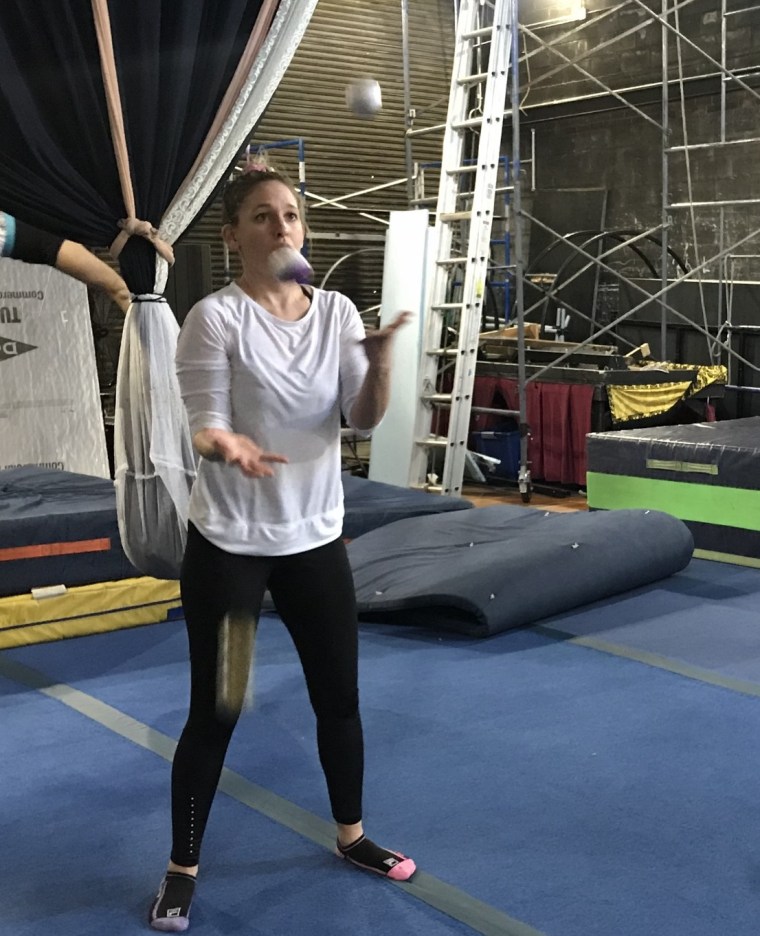On the outside, the work-from-home, be-your-own-boss life can seem glamorous. But if I invited you over to my apartment on a Monday morning, you’d see me wearing pajamas, sorting through to-do lists and plotting how to continue to keep my business alive and well.
There are many benefits of having your own business — setting your schedule and not having to worry about office politics among them — but there can be some hefty downsides, like lack of collaboration with co-workers and company-sponsored learning experiences, like retreats or classes, to keep you inspired.
Years ago, I worked for a start-up that would have weekly fireside chats with industry professionals and host monthly personal development workshops for employees. Since being on my own (starting in 2015) I have hardly done any of that.
So in 2019, I decided to invest in my own growth. I've taken some in-person classes like Improv for Professionals to help stir up creativity, laughing yoga to help with stress and anxiety, and a cooking class, so my homemade lunches could evolve from peanut butter and jelly sandwiches to something more appropriate for an adult.
When I told a friend about how I spent this year taking interesting classes, she mentioned that her agency invited someone to come in and teach them how to juggle, which she says, changed how people saw themselves and inspired creativity at the office.
Juggling: A tool to reset your thought process?
I found that interesting. Was there really more to juggling than tossing balls up in the air and catching them?
Turns out the answer is yes.
Sherrie Campbell, a clinical psychologist, says that juggling works wonders for our critical thinking skills.
“Juggling is a soothing, methodical, organized activity for the brain,” says Campbell. “This soothes, focuses and slows the brain down to look at and focus on small details and movements. These neuronal connections have proven to improve a person's thought process.”
While I knew anything that would slow me down mentally would be good for me (which is why I force myself to do yoga), I knew it would be hard. I do everything fast. I rush through life, my work and my creative process when I’m brainstorming projects.
That’s exactly why I decided that before the end of last year, I’d give juggling a try as my final personal and professional development course of the year.
I decided to take a juggling class at a place called The Muse in Brooklyn. Here's what I learned:
Lesson 1: Press pause on autopilot to break habitual thinking
First, the instructor told us to grab just one ball. For five minutes, we practiced tossing it and catching it with the same hand. It seemed easy, but there was technique involved, because how we threw and caught here would determine how successful we were when additional balls were added.
It was during this first step that I learned something important: We have to re-train the way we think, especially when we’ve done something a million times before. I’ve caught balls before with one hand, but never in this particular way, which required a certain 90-degree angle and toss from the elbow up. It made me think about all the simple tasks I do at work that I do on auto-pilot. What if I changed some of those things? Daily habits like waking up and checking emails, or small tasks throughout the day that I perform too fast. What if I altered those processes? How would it trickle down and have a larger impact, like changing the way I brainstorm new ideas or respond to feedback?
Irena O’Brien, Ph.D.,a cognitive neuroscientist and the founder of The Neuroscience School, says that learning how to juggle can help us understand that we can indeed change our brain.
One study revealed that “after 3 months of learning how to juggle, there was more grey matter (neurons or brain cells themselves) in the temporal and parietal cortices of the brain. These brain areas are responsible for perceiving and anticipating moving objects in space,” says O’Brien. “And the amount of grey matter increase was related to their juggling expertise, so the more juggling expertise, the greater the increase in grey matter volume. Three months after they stopped juggling, the grey matter volume in these areas decreased.”
So does this translate to the way we use our brains at work?
“Takeaway: The brain is plastic. Anything we do repeatedly (even thinking certain thoughts) over a period of time will change the brain. When we stop, the brain changes will start to reverse. This provides hope for changing habits and thought patterns,” says O’Brien.

Lesson 2: You learn more from your mistakes than from your successes
Next, the instructor asked us to pick up two balls and begin tossing with the right hand, tossing with the left hand, catching with the left hand and catching with the right hand, in that sequence. It seemed impossible, and at first, it was.
I dropped the ball so many times in the first five minutes, my legs were sore from constantly squatting to pick them up. Quickly, I learned that I was making the same set of mistakes again and again. My lack of change prevented me from improving.
The instructor broke down exactly what I was doing wrong: “Jen, you have to slow down. You need more patience. You take feedback well, but then make extreme changes.”
I started to laugh. The very mistakes I was making here felt exactly like the mistakes I make every single day in life and in my business. I’ve been known to send incomplete emails that I write at lightning speed and don’t proofread or cut calls short because I’m in a rush. That very same speedy tendency showed up in my juggling game.
One of the biggest lessons we can learn when juggling doesn’t come from the catches, it comes from the drops.
Jen Slaw, a consultant who works with companies struggling to keep up with change and improve employee engagement, says that one of the biggest lessons we can learn when juggling doesn’t come from the catches, it comes from the drops.
“When we drop the balls, we can figure out what went wrong and make an adjustment for the next attempt,” says Slow. “When we are not afraid to drop the ball, it becomes part of the learning process.”
I grew tired of making the same mistakes over and over again. I also realized my juggling class was halfway over and I wanted to get better. So I started to listen to the teacher. I slowed down. I took deep breaths to force myself to remember to be patient. Soon after, tossing and catching two balls became easy.
Attempting a completely novel activity like juggling allows us to "let go of unrealistic expectations and old patterns that aren’t working, creating space for new strategies and ideas,” says Slaw.
Lesson 3: Recognize repetitive mistakes to change the pattern
As soon as the teacher saw that I was becoming a professional at juggling two balls, he told me to grab a third. That’s when the frustration really kicked in. Holding one ball in my right hand and two in my left, I tried to mouth out loud the throw and catch pattern, but it didn’t work. My brain, hands and eyes could not sync and I dropped the balls every single time.
The teacher spent quality time analyzing what I was doing wrong and kept reminding me of the mistakes I made with two balls and how they were showing up again here. With only fifteen minutes left in class, I considered giving up. As someone who is quite stubborn, in my own work environment, I can be quick to give into what’s going wrong and let myself feel stuck for far too long. I didn’t want that to be the case here. I wanted to learn how to change. So I did something I hardly ever do, I admitted I needed help.
Slaw shares that one of the benefits of learning a brain intensive skill like juggling is that at some point, everyone has to ask for some help.
“Innovation happens in an environment of trust and respect where all feel comfortable contributing. It’s easier to juggle with more hands,” says Slaw.
As a solopreneur, that’s something that takes effort and research, finding mentors and meetups. In this juggling class, it meant putting aside pride and ego and asking the teacher for extra help. I improved, but wasn't able to master the three-ball juggle before the class came to an end.
So I came home and bought my own set of juggling balls. Every day, when I spend my five minutes juggling in the living room, I see myself getting a tiny bit better.
“The simple act of learning to juggle can translate into the powerful ability to see that something that seemed impossible is achievable,” says Slaw. “After all, obstacles become opportunities for learning, change and growth.
After my juggling experience, I noticed that I started to do things differently in my work. I slowed down when making decisions, I used more patience when I felt frustrated, and whenever I felt stuck, I took a step back, and tried to do things differently. Or, I picked up my juggling balls, tossed them around for a few minutes, and went back to work, with new perspective, and if nothing else, a big smile on my face.
More from BETTER
- These 3 productivity hacks helped me boost my income 65 percent
- How 'interstitial journaling' can help you focus your day and work smarter
- Here's how to stay productive — and connected — when you work from home
- I was feeling uninspired at work — until a career coach gave me this one tip
Want more tips like these? NBC News BETTER is obsessed with finding easier, healthier and smarter ways to live. Sign up for our newsletter and follow us on Facebook, Twitter and Instagram.

